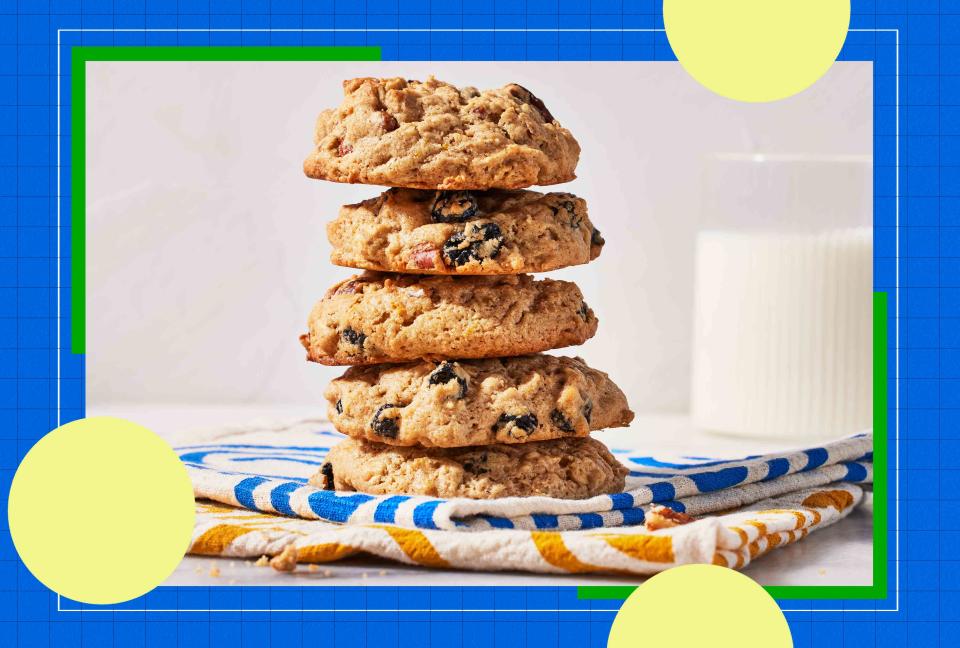The Surprising Reason You Shouldn't Eat Raw Cookie Dough (No, It's Not Eggs)
Put down the spatula.

PHOTOGRAPHER: JEN CAUSEY, FOOD STYLIST: EMILY NABORS HALL, PROP STYLIST: PHOEBE HAUSER
Let's be honest, we’ve all swiped a bite or two of raw cookie dough from the bowl. As kids, licking the beaters was a privilege that was almost better than the cookies themselves. But you’ve also probably been told not to eat cookie dough raw because it’s potentially unsafe, and you’ve likely heard that raw eggs are the culprit. While raw eggs can contain Salmonella, a type of bacteria that can be found in animal waste and sometimes pass through an egg's shell, it's easily killed by simply cooking food to 165°F. But did you know there’s another raw product in your cookie dough that can pose the same risks?
Raw Flour Is Unsafe to Eat—Here’s Why
What's so dangerous about raw flour anyway? It’s not perishable like dairy or meat. But since flour is meant to be cooked, producers assume you will heat it to a temperature that kills most bacteria. Because of this assumption, flour isn't typically treated to kill bacteria putting it in the same category as raw meat or uncooked eggs.
Similar to raw eggs, flour can harbor Salmonella as well as E. Coli. Like Salmonella, E. Coli is often transmitted through animal waste. While it's not exactly pleasant to think about animal waste near our food, flour is made from wheat which is grown in fields that is sometimes in very close proximity to where you might find animal waste. Since flour can’t be washed to clean any harmful bacteria off the way veggies can, it’s important to heat it to a temperature where it can be destroyed. The CDC regularly investigates outbreaks of foodborne illness directly connected to consumers eating raw flour—as recently as 2023.
Related: Is It Safe to Eat Raw Eggs?
You might be thinking, “Well, I’ve eaten raw cookie dough many times and never gotten sick!” This may be true, however, bacterial foodborne illness is sneaky. It can present symptoms as soon as just a few hours or as long as a few weeks. It can be tough to say if that horrible stomach ache or other type of gastrointestinal distress was related to that raw cookie dough you sampled a few days ago.
Sneaky Sources of Raw Flour
Raw flour is present elsewhere, even if you’re not making cookies from scratch. Baking mixes to make brownies, cakes and pancakes are all sources of raw flour and shouldn’t be eaten raw. Your best bet is to avoid licking the spoon, no matter how tempting it may be, and enjoy your baked goods fully cooked. And as yummy as a brownie with a gooey center sounds, it’s always best to cook it thoroughly to ensure it reaches a safe temperature of 165°. The same goes for a “medium rare” pancake or other baked goods like quick breads and muffins.
Storebought raw cookie dough, whether in a log ready to slice and bake or shaped into ready-to-bake portions, does not get a pass either. It also contains raw flour (and eggs!), and you should resist the urge to eat it raw.
Related: Joy Bauer's Fiber-Packed Edible Cookie Dough Is So Simple, It'll Knock You Off Your Feet
What’s a Raw Cookie Dough Lover to Do?
If you’re reading this with tears welling in your eyes at the thought of never eating raw cookie dough again, don’t fret! If your goal is simply to eat raw cookie dough and only raw cookie dough, try a recipe that has been created for that reason. Edible Chocolate Chip Cookie Dough Balls are made with canned chickpeas and nut butter as a base in place of raw flour and eggs and are every bit as satisfying as what you grew up with. Some brands like Nestle have come out with “edible cookie dough” which is safe to eat right out of the package. And cookie dough ice cream is also safe to eat as well.
If you’re going for edible cookie dough that you’re eventually going to bake, you can also buy heat-treated flour that’s safe right out of the bag but it's only available in large quantities. And while some sources advise on how to heat-treat your flour at home, the FDA doesn't recommend this practice, stating that there is no evidence that home treatments are effective at destroying bacteria. And lastly, don't forget about the raw eggs. Opt for pasteurized-in-the-shell eggs which are heated in such a way that destroys bacteria without cooking the eggs inside.
Read the original article on Eating Well.

